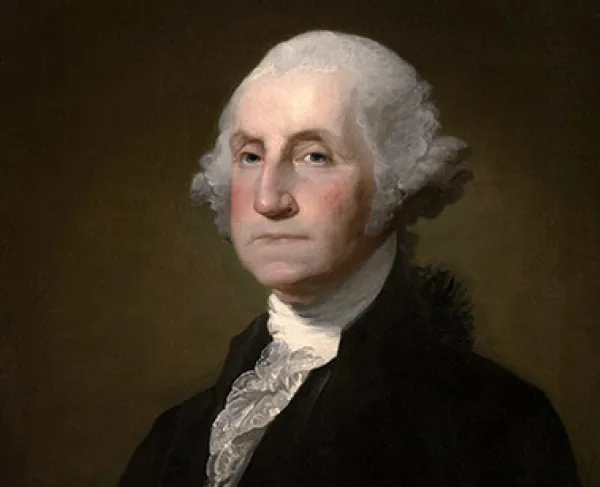
Boston
Siege of Boston
Massachusetts | Apr 19, 1775 - Mar 17, 1776
Following the skirmishes at Lexington and Concord in April 1775 that began the American Revolution, the British Army under Thomas Gage retreated to the safety of Boston. Soon the victorious Patriot army besieged the British army, which lasted well into March 1776, when the British finally evacuated Boston.
How It Ended
Patriot Victory. By March 1776, American General George Washington had the artillery he needed to force the British out of Boston. During the night of March 4th, he fortified Dorchester Heights, which overlooked the city and harbor. Faced with this new threat of Patriot artillery reaching the city, British General William Howe decided to evacuate the city.
In Context
In the wake of the Battles at Lexington and Concord, Patriot forces from all over New England flooded towards British-held Boston. Soon the American force besieged the British within the city, morphing the rebellion into a full-scale war.
On April 19, 1775, British forces under the command of Thomas Gage were sent into the countryside of the Massachusetts colony to try and capture military supplies housed near Concord. Along the way, the British force engaged with the Patriot militia at Lexington and Concord, where they found no arms. Soon more Patriot bands in the area began to fight the British army, forcing them to retreat into Boston. After the British defeat, support for the Patriot cause soared, causing hundreds to join the growing Patriot army moving towards Boston, where they hoped to take the city.
Once the siege began in April 1775, both armies consolidated their forces and constructed defenses for the next two months. Finally, the British launched an assault in June resulting in the Battle of Bunker Hill. Howe captured the position but at the cost of heavy casualties, especially among the officer corps.
In June, George Washington was appointed by the Continental Congress to take command of the American forces. Washington faced the heavy task of molding the various militias into what was known as the Continental Army. The new commander implemented a new system of uniforms and discipline while at the same time dealing with supply problems as well as the capture of Boston itself.
Washington's line surrounded the city, from Roxbury to Cambridge. Skirmishing between both sides heated shortly after Washington's arrival. Parties of Continentals assailed British outposts on Boston Neck, and a raiding party captured the lighthouse on Great Brewster Island. An American force captured and then fortified Ploughed Hill at the end of August.
Apprised of the situation in North America, the British government issued an order to recall Gage in early August and replace him with Howe. Howe would not assume command until the second week of October, but the British decided to abandon Boston by then. However, the operation would require time, and it would take several months to assemble the ships necessary to evacuate the city.
Both sides huddled in their defenses as the New England winter approached. Still, Washington remained focused on taking the city. To that end, he dispatched Boston native Henry Knox to Fort Ticonderoga to retrieve artillery captured that spring. Knox arrived in early December and began his return trek with fifty-seven guns of various types and calibers in tow.
The artillery gave Washington an advantage over Howe and eliminated the inherent risk of a massive assault. On February 16, 1776, Washington called a council of war. At the suggestion of his officers, Washington decided to capture Dorchester Heights, placing his artillery on the eminence and rendering Howe's position untenable. The operation got underway on March 4, and by dawn, the Continentals stood ensconced atop the high ground.
19
79
Once Washington established his positions along Dorchester Heights, Howe was forced to evacuate Boston earlier than expected. As a result, the last of Howe's army boarded transports and departed on March 17. Within months, Howe would return and face Washington in a campaign for New York.
In June 1775, British forces under the command of Thomas Gage decided to attack Patriot positions at Breed's Hill in what would be known as the Battle of Bunker Hill. British forces were victorious in taking the hill in the resulting battle but took heavy casualties, especially among the officer corps. Nevertheless, both sides lost heavily in the battle and refrained from launching any further attacks. From then on, skirmishes occurred between both sides until, in March of 1776, Washington occupied Dorchester Heights.
During the Winter of 1775-1776, General George Washington received badly needed guns from Fort Ticonderoga. With his new artillery pieces, Washington bombarded the British fortifications in Boston but found they had little effect on the British lines. Washington then moved his artillery onto Dorchester Heights, which overlooked the harbor and the city. During the night of March 4th, Washington’s men fortified the heights and began to bombard the city by the following day. After this, British General William Howe realized he had to withdraw from Boston much sooner than he had planned.
Boston: Featured Resources
All battles of the Boston Campaign
Related Battles
16,000
11,000
19
79















